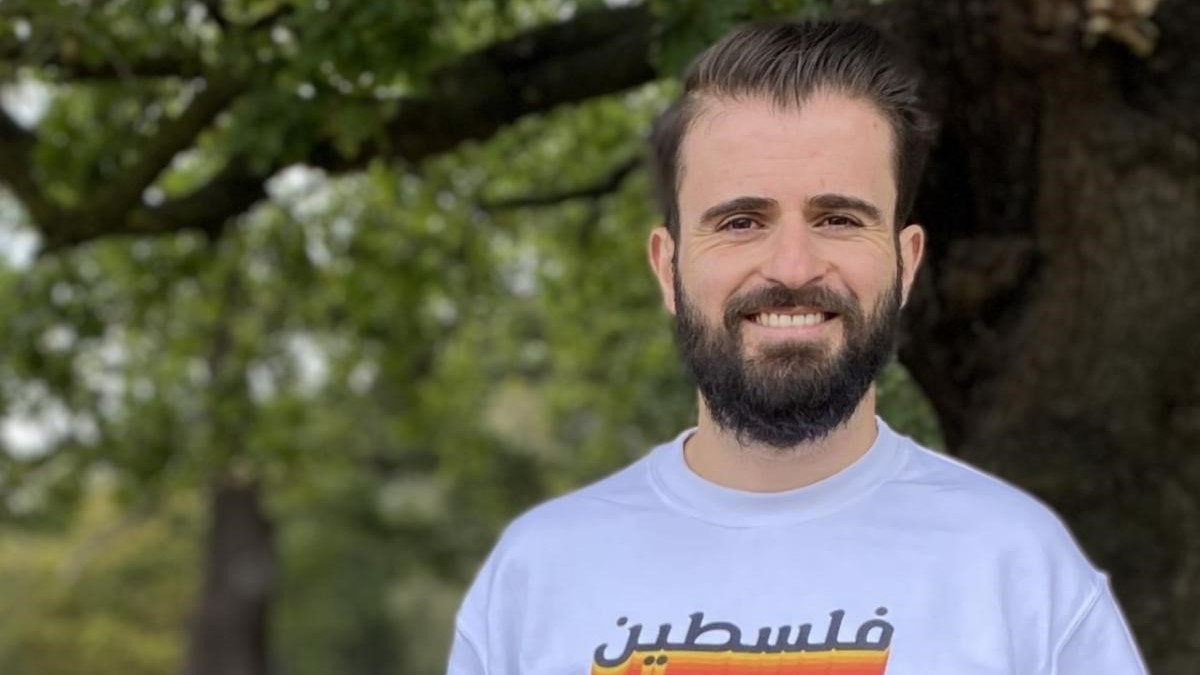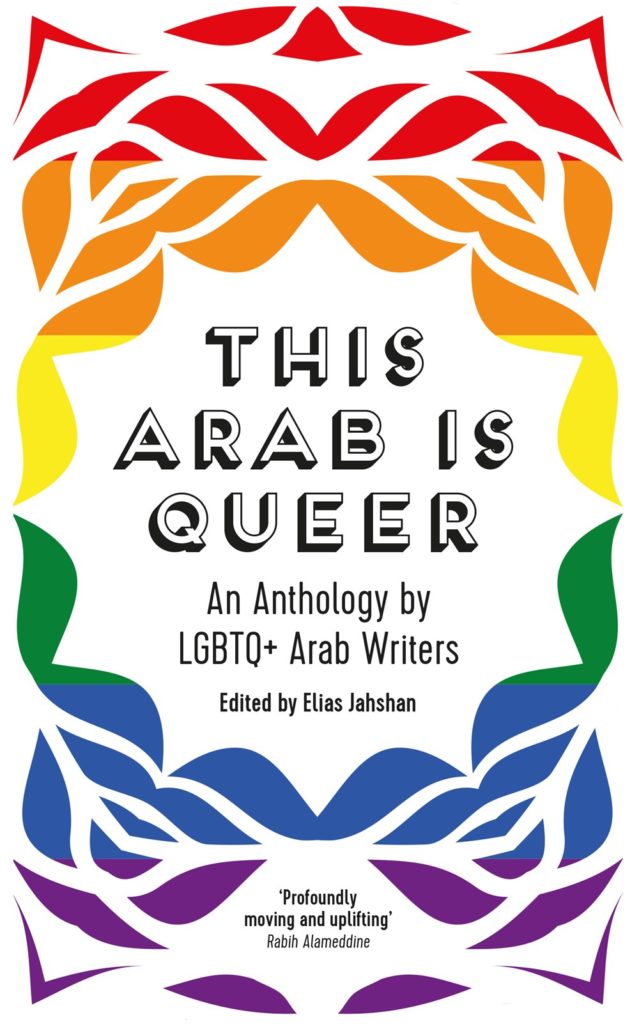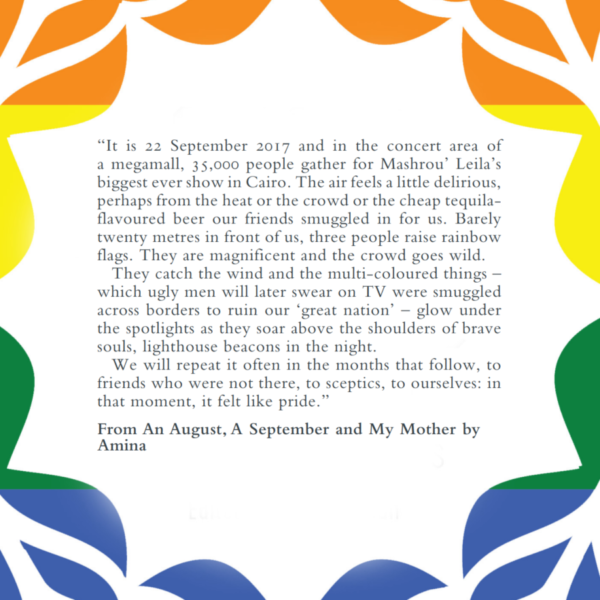
Elias Jahshan (he/him) is a Palestinian/ Lebanese-Australian journalist, writer and editor. He is a former editor of Star Observer, Australia’s longest-running LGBTQ+ media outlet. His short memoir ‘Coming Out Palestinian’ was anthologised in Arab Australian Other (Picador, 2019), and he has written freelance for outlets including The Guardian, SBS Voices and Jordan based LGBTQ e-zine My.Kali. Born and raised in western Sydney, he now lives in London and is the social media editor at The New Arab.
We talked with Elias about curating This Arab is Queer: An Anthology by LGBTQ+ Arab Writers, his inspirations, and reading habits.
What inspired you to curate this collection?
 Publishing a book has always been a dream of mine. In the lead-up to the first lockdown in the UK during spring 2020, I went through a phase where I read a slew of incredible anthologies. Namely It’s Not About The Burqa, The Good Immigrant (both the UK & US editions), Our Women on the Ground, and of course Arab, Australian, Other – the latter of which I was privileged to have contributed a chapter entitled ‘Coming Out Palestinian’. Reading these anthologies, and reading their introductions and reviews contextualising the books and the processes that went into curating them got me thinking: “I wonder if I could curate my own anthology?”
Publishing a book has always been a dream of mine. In the lead-up to the first lockdown in the UK during spring 2020, I went through a phase where I read a slew of incredible anthologies. Namely It’s Not About The Burqa, The Good Immigrant (both the UK & US editions), Our Women on the Ground, and of course Arab, Australian, Other – the latter of which I was privileged to have contributed a chapter entitled ‘Coming Out Palestinian’. Reading these anthologies, and reading their introductions and reviews contextualising the books and the processes that went into curating them got me thinking: “I wonder if I could curate my own anthology?”
That light bulb moment of sorts made me remember all the times I witnessed how my global community of queer Arabs was represented – or misrepresented, rather – in the media. For example, at the time I was the editor of Star Observer – Australia’s longest-running queer media outlet – I remember using wires copy for articles around ISIS’s reign of terror in Syria and Iraq, and the infamous, and horrific, accounts of them throwing gay men off rooftops, among other things. I remember reports of Egypt’s regime storming a sauna that was purportedly a sex-on-premises-venue. It’s not that the media is reporting on these stories that’s the issue – they needed to be reported, of course – it’s that the focus was almost always on being sensationalist and it was common for the articles to have subliminal, underlying current of Islamophobia running through them. There was barely ever any understanding as to why state-sanctioned homophobia existed, and barely any mention of the work of activists on the ground. I just felt like our community was not being given the justice to be portrayed with nuance and dignity. It felt like we were being spoken over, rather than being given a platform to speak for ourselves.
Also, as editor of Star Observer, it struck me how much erasure there was of queer Arabs in queer media, and in queer communities as a whole – at least in Australia and many other western countries. Things are a lot better now for sure, but I am still met with uncomfortable silences from people when I tell them I am gay and Arab, or better yet, when I am gay and Palestinian. The idea that we can be both – and love being both – is something that doesn’t fit the narrative of many whom are western-centric in their outlook of the world. Oh, and don’t get me started on the cultural stigma and rampant homophobia that exists in my Arab community. In both contexts, it’s as if there’s an implied expectation that we only be gay and that’s it, or only be Palestinian and that’s it.
So when I reflected on my experiences of queer Arab erasure in the media, and personal anecdotal moments where people could not reconcile me being gay and Arab at the same time, it quickly led to the premise of This Arab is Queer. I knew that whatever anthology I set out to do, it had to be something that was never done before, something that was going to provoke discussion and celebrate the diversity and nuances of our community. So I sat down and wrote the proposal, and just over two years later – the book is coming to life.
How did you choose the writers who would be involved in This Arab is Queer?
I had a list of about 40 people I wanted to approach. Most of them are writers, but many of them are also artists, poets, activists, graphic designers, and other creatives. I had been following them on Twitter and/or Instagram for a while, and secretly their biggest fans. As I was writing the proposal, I started making notes of names on the Notes app on my phone, a list which gradually grew and was eventually transferred to a detailed excel spreadsheet once Saqi was signed on as my publisher.
I ended up contacting all the names I had on my spreadsheet, but of course due to budgeting constraints and a limit of space in the book, I could not accept all the submissions I ended up receiving upon deadline. I was blown away by the support and enthusiasm of the writers. The writers I ended up choosing come from all walks of life, and represent 11 Arabic-speaking countries. Importantly, there are two Black Arabs involved, several still live in the Middle East or North Africa, and there are also several non-binary and trans writers too. It’s crucial to highlight the diversity of the Arab community both at home and in the diaspora, as well as the diversity of the queer Arab community.
How would you define the Arab queer experience?
I don’t think I could provide an answer that would do this question justice. Every queer Arab has their own unique experience. We are all at varying stages in our journeys – some of us (like me) are out, while many of us are not out at all – and that’s perfectly OK. It’s their life, and their business, and they do not owe anyone an explanation as to why they’re not out. Heck, even the concept of “coming out” is western-centric, and one that does not necessarily have to be applied to all cultures around the world.
What do you know now that you wish you'd known at the beginning of your writing journey?
That working with your idols, with people you’ve admired from afar for a very long time, is the best thing you can ever do. It may seem scary at first, it may be fraught with anxious thoughts of “what if they think my book idea is awful?” but each and every person you end up working with is lovely and relatable. Their support and involvement in the anthology will be so rewarding – not just for you, but for the whole queer Arab community around the world.

Do you read one book at a time or multiple?
I’m a one-book-at-a-time person.
Ideal reading environment-- paint us a picture.
Heading to a cute little café on a rainy day, finding that perfect seat by the window and just sitting there, reading, as the world goes by and you have a cup of coffee in your hands.
Hardback vs. Paperback vs. Ereader?
Paperback – although I’m an ereader at the moment – PURELY because my tiny London flat has no room for bookshelves at the moment!
How do you organize your bookshelves?
By author – but not necessarily in alphabetical order.
If readers take away one thing from This Arab is Queer, what would you like them to learn?
That we are not what the media portrays us to be. That we have our own agency, and that our identity as queer or Arabs interweave with and compliment each other ease. And more importantly, I hope the book opens up nuanced discussions about our community, rather than resort to orientalist, stereotypical tropes. I also don’t want readers to think this is a definitive collection, and that’s it. It should be the first of many other anthologies of this kind. And when more like this prop up in the future, with different editors and different contributors, I know I will have done my job.
For the first time, LGBTQ+ Arabs come together to share their personal stories of hope, struggle and love. This Arab is Queer features the searingly honest and moving memoirs of eighteen queer Arab writers – some internationally bestselling, others using pseudonyms. Here, we find heart-warming connections and moments of celebration, alongside essays exploring the challenges of being LGBTQ+ and Arab. From a military base in Saudi Arabia to whispers between lovers caught between the bedsheets; and from a concert in Cairo where the rainbow flag was raised in front of a crowd of thousands, to making it happen as a drag queen in exile, this collection celebrates the true colours of a rich, vibrant queer Arab experience.

